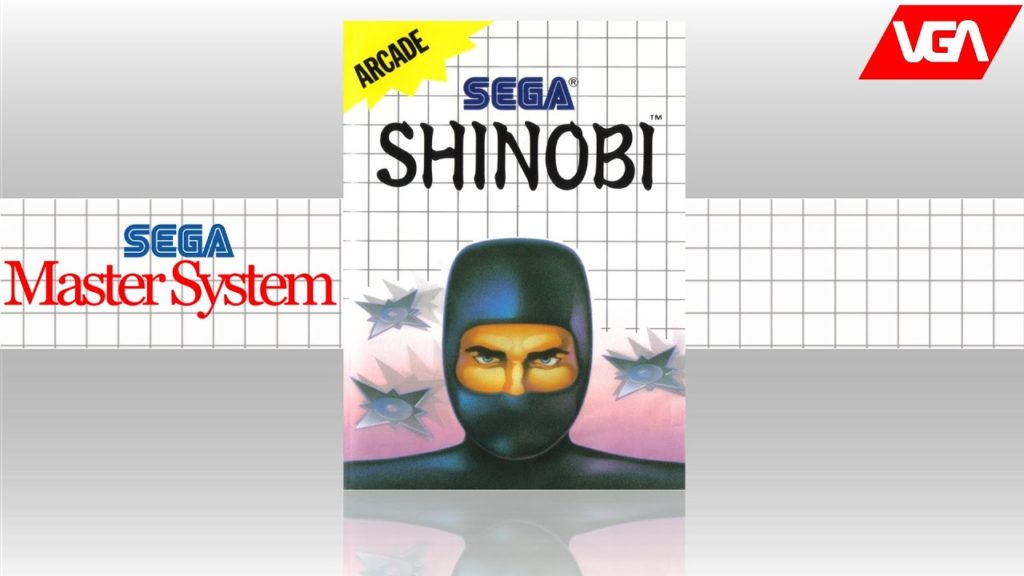Developer : Sega
Release date : 1988
Synopsis :
Shinobi (忍) is a side-scrolling hack-and-slash action game produced by Sega, originally released for arcades on the Sega System 16 board in 1987. The player controls ninja Joe Musashi, to stop the Zeed terrorist organization from kidnapping students of his clan.
Shinobi was a major commercial success in arcades; it topped the monthly Japanese table arcade charts in December 1987, and became a blockbuster arcade hit in the United States, where it was the highest-grossing conversion kit of 1988 and one of the top five conversion kits of 1989. It was adapted by Sega to its Master System game console, followed by conversions to the Nintendo Entertainment System, PC Engine, and various home computers. It was re-released as downloadable emulated versions of the original arcade game for the Wii and Xbox 360. The arcade game joined the Nintendo Switch in January 2020 through the Sega Ages series. Shinobi’s success inspired various sequels and spin-offs of the Shinobi series.
The controls of Shinobi consist of an eight-way joystick and three action buttons for attacking, jumping, and using ninjutsu techniques called “ninja magic”. The player can walk, or perform a crouching walk by pressing the joystick diagonally downward. The player can jump to higher or lower floors by pressing the jump button while holding the joystick up or down. The protagonist Joe Musashi’s standard weapons are an unlimited supply of shurikens, and punches and kicks. Rescuing certain hostages in each stage will grant him an attack upgrade replacing throwing stars with a gun, and his close-range attack becomes a katana slash. Musashi’s ninjutsu techniques can only be used once per stage and will clear the screen of all enemies, or greatly damage a boss. Depending on the stage, the three ninjutsu techniques are a thunderstorm, a tornado, and a doppelganger attack.
Enemies include punks, mercenaries, ninjas, and the Mongolian swordsmen guarding each hostage. Musashi can bump into most enemies without harm and can only be killed if he gets struck by an enemy’s attack, gets hit by a projectile, or falls into a bottomless hole. Then, the stage restarts but retains any saved hostages. When the player runs out of lives, additional coins will continue the game except the final mission. The time limit is three minutes per stage and bonus points are awarded for time, with additional bonuses for refraining from ninjutsu technique (except on the fifth level) or using only melee attacks. Extra lives are awarded for achieving certain scores, completing the bonus round, or rescuing a special hostage.
A bonus round has a first-person perspective of throwing shurikens at incoming enemy ninjas, for an extra life.
A ninja named Joe Musashi must stop a criminal organization called Zeed from kidnapping the children of his ninja clan. Five missions consist of three stages in the first mission and four stages each in the rest, where Musashi approaches Zeed’s headquarters and frees all the hostages in the first two or three stages with a boss at the final stage of each mission. At the start of each mission, the player is shown the objective, with a file containing a photograph of the enemy boss and a map display pinpointing the location of the next stage.
Sega converted Shinobi to its Master System game console. It was released in Japan on June 19, 1988, and in North America and Europe. Some of the play mechanics were altered. Instead of one-hit kills, the player now has a health gauge before losing a life. Hostage rescue is now an optional task but provides upgrades to the close and long-range weapons, and restores or expands the health gauge. Rescuing certain hostages is a requirement to access the game’s bonus stages, which now occur after the regular stages instead of each boss fight. Bonus rounds provide the ninjutsu skills.
In October 1993, Atari Corporation filed a lawsuit against Sega for an alleged infringement of a patent originally created by Atari Corp. in the 1980s, and Atari sought a preliminary injunction to stop manufacturing, usage, and sales of hardware and software for the Genesis and Game Gear. On September 28, 1994, both parties reached a settlement involving a cross-licensing agreement to publish up to five games each year across their systems until 2001. The Master System version is one of the first five games approved from the deal by Sega in order to be converted for the Atari Jaguar, but it was never released.
Source : Wikipedia


